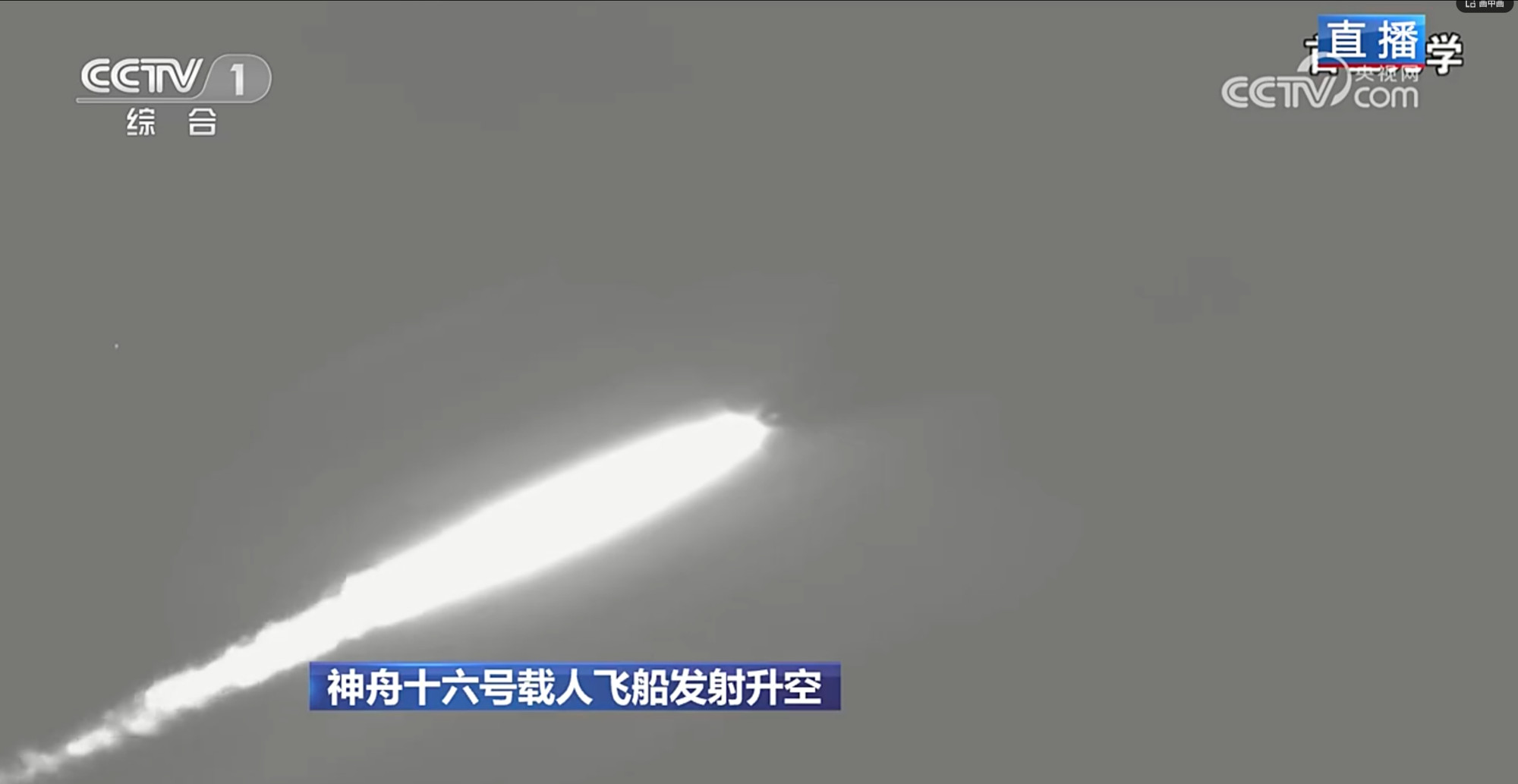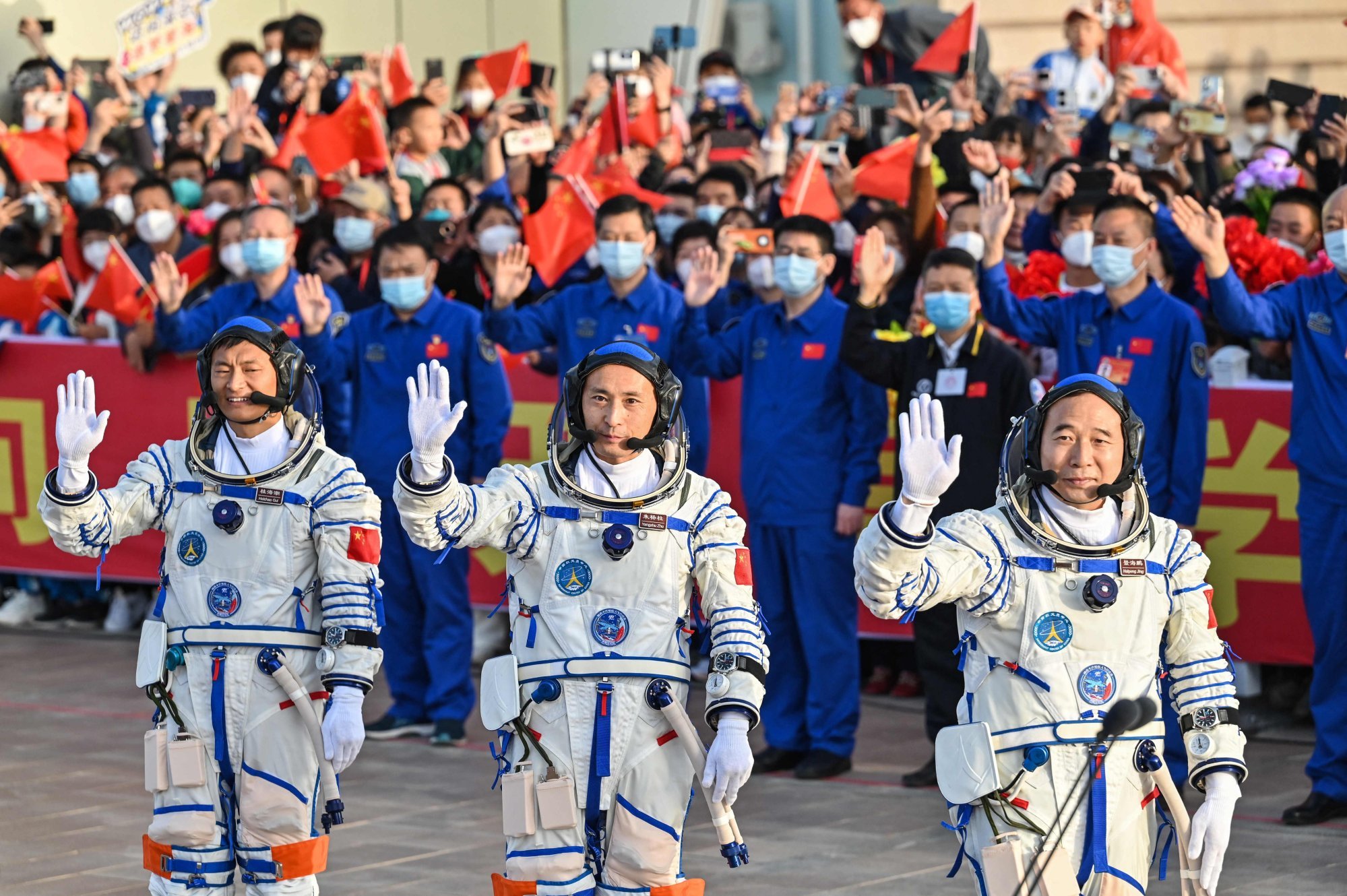China’s Shenzhou 16 spacecraft left Earth at 9.31am on Tuesday, sending three astronauts to the Tiangong space station on a five-month mission to mark “a new stage of application and development” in the country’s space programme.
The China Manned Space Agency (CMSA) declared the launch a success about 19 minutes after the craft blasted off from the Jiuquan satellite launch centre in the Gobi Desert in northern China as planned.
The astronauts are expected to dock with the station’s Tianhe core module – 400km (248 miles) above the ground – after a journey of less than seven hours.
Do you have questions about the biggest topics and trends from around the world? Get the answers with SCMP Knowledge, our new platform of curated content with explainers, FAQs, analyses and infographics brought to you by our award-winning team.
Shenzhou 16 mission commander Jing Haipeng said before the craft on Tuesday morning that the launch marks “a new stage of application and development” in China’s space programme, according to the mission’s commander Jing Haipeng.
Jing is making his fourth journey into space, a record for the country’s astronauts. He is leading a diverse crew which includes China’s first civilian to join a mission beyond the Earth’s atmosphere.

Gui Haichao, a professor at Beihang University in Beijing, brings his expertise as a payload specialist to the crew and is the first Chinese astronaut to be drawn from outside the ranks of the PLA.
The third member of the crew is space flight engineer Zhu Yangzhu, who is also making his first journey into space.
The astronauts will be relieving the Tiangong space station’s inaugural crew, which is due to return to Earth next month, after a brief overlap.

The astronauts on board the Tiangong have been conducting experiments and assembling equipment during their six months in space, with their replacements due to continue the research effort.
The crew will carry out in-orbit tests and experiments to study novel quantum phenomena, high-precision space time-frequency systems, the verification of general relativity and the origin of life, according to state news agency Xinhua.
They will also be on board to witness the docking of the uncrewed cargo spacecraft Tianzhou-5 and the Shenzhou-17 mission.
The Tianzhou 6 cargo ship made a resupply mission to the space station earlier this month, the first since the Tiangong’s completion in November.
Hong Kong Chief Executive John Lee Ka-chiu, speaking before his weekly meeting with his advisers in the Executive Council on Tuesday, said he wanted to “enthusiastically congratulate” the mission’s successful launch.
“The Shenzhou 16 manned space mission is the second mission for the country’s manned space programme this year, it is also the space station’s first manned mission in its application and development stage,” Lee said.
“The country’s manned space exploration efforts are having continued progress and success, this is making me feel very proud and honoured.”
Fierce competition expected in Hong Kong for first-ever astronaut drive
The city leader also offered his support to around a dozen people from Hong Kong and Macau who have passed the first stage selections for a payload specialist for China’s space programme. They will travel to Beijing next month to begin the second round of selections.
“Hong Kong’s candidates came from government departments, the Hospital Authority, universities and other organisations and companies,” Lee said.
“I want to cheer for the Hong Kong candidates. I expect there will be someone among them who will be able to successfully realise their dreams of travelling to space.”
Additional reporting by Harvey Kong
More from South China Morning Post:
- China space mission prepares for lift-off with first non-PLA astronaut
- Chinese space start-up launches the world’s first rocket powered by ‘coal’
For the latest news from the South China Morning Post download our mobile app. Copyright 2023.





